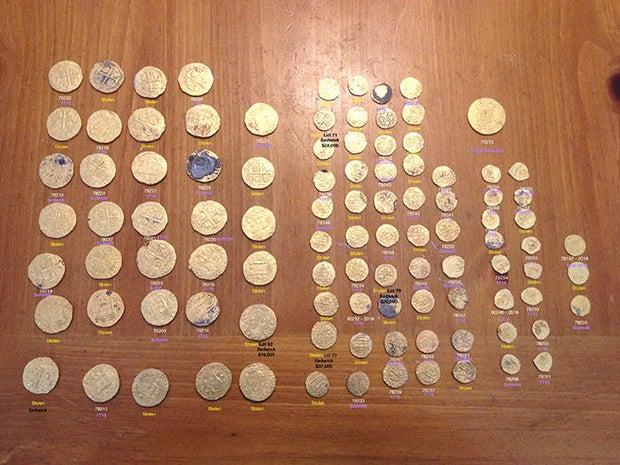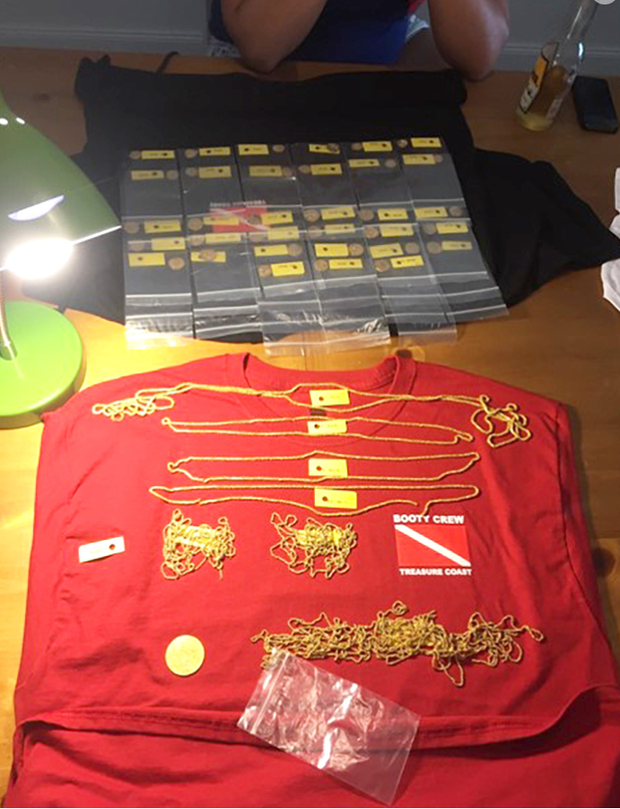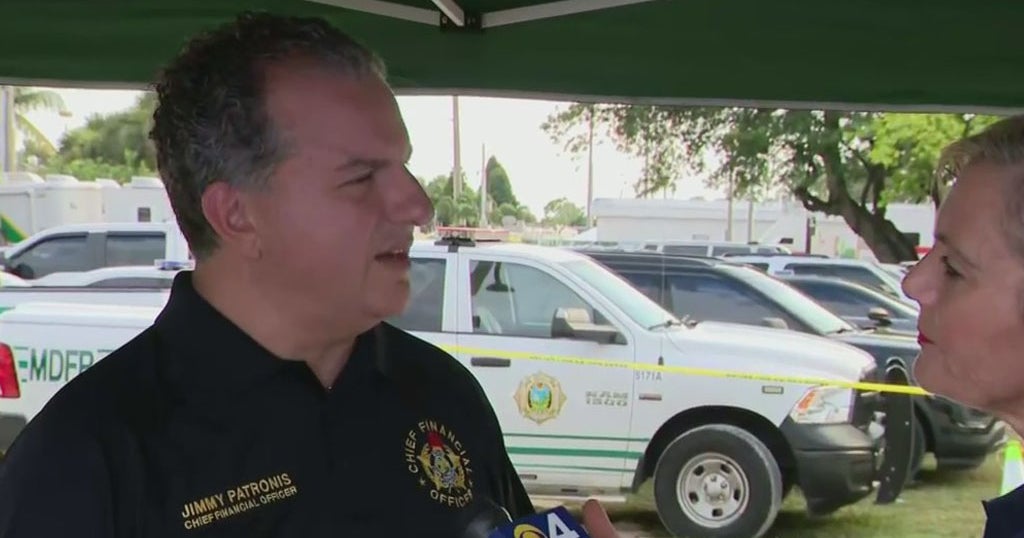Lost and found: Gold coins worth $1 million stolen from 1715 shipwrecks off Florida coast
FORT PIERCE - More than 300 years after Spanish treasure ships sank during a hurricane off Florida's Treasure Coast, 37 stolen gold coins valued collectively at more than $1 million have been recovered.
On Tuesday, the Florida Fish and Wildlife Conservation Commission announced the recovery, calling it a "major milestone in a long-standing investigation into the theft and illegal trafficking of these priceless historical artifacts."
As required by state and federal law, the recovered artifacts will be returned to their rightful custodians.
The Treasure Coast in Florida is named after the Spanish Treasure Fleet that was lost in a hurricane in 1715.
In 2015, CBS Mornings reported Booty Salvage used GPS technology to find gold coins and other artifacts off Fort Pierce from the 11 lost ships.
"It's definitely a passion. You gotta want to do this," Booty Salvage diver Eric Schmitt, a professional treasure hunter, said at the time.
"Mostly what we find is garbage on a daily basis -- beer cans and lead sinkers and bullets."
A decade lawyer Schmitt has been charged with dealing with stolen property.
"This case underscores the importance of safeguarding Florida's rich cultural heritage and holding accountable those who seek to profit from its exploitation," FWC Investigator Camille Soverel said in a news release.
The coins were minted in Lima, Peru, between 1697 and 1712.
Seven days after departing from Havana, Cuba, the 11 ships of the fleet were lost in a hurricane along with at least $400 million worth of gold and jewelry.
The Starz show "Black Sails" describes the 1715 Treasure Fleet in its first season in 2014.
The Urca de Lima from the 1715 fleet opened to the public in September 1987 in Fort Pierce and is protected as part of the Florida Underwater Archaeological Preserves.
For centuries treasure hunters have been searching for the precious items.
FWC investigators, in collaboration with the FBI, launched an investigation on June 10 of the missing coins.
In 2015, members of the Schmitt family worked as contracted salvage operators for 1715 Fleet - Queens Jewels, LLC. They uncovered 101 gold coins from the wrecks off Fort Pierce worth $4.5 million. Fifty-one of these coins were reported correctly and adjudicated, but 50 coins were not disclosed and were subsequently stolen, FWC said.
This evidence linked Schmitt, to the illegal sale of multiple stolen gold coins between 2023 and 2024, FWC said.
In multiple search warrants, agents recovered coins from private residences, safe deposit boxes and auctions.
Five stolen coins were reclaimed from a Florida-based auctioneer, who unknowingly purchased them from Schmitt.
Advanced digital forensics identified metadata and geolocation data linking Schmitt to a photograph of the stolen coins taken at the Schmitt family condominium in Fort Pierce.
Also Schmitt took three of the stolen gold coins and placed them on the ocean floor in 2016 to be found by the new investors of 1715 Fleet - Queens Jewels, LLC, FWC said.
The FWC worked with historical preservation experts, including Mel Fisher-Abt. to authenticate and appraise the recovered artifacts.
Investigators are attempting to recover the remaining 13 stolen coins and "bringing those involved in their illegal sale to justice."
According to the CBS Mornings report, the State of Florida gets 20% of the profits off the top.
The Schmitt family, as a subcontractor, split the bounty 50-50 with Queens Jewels, LLC, the company that owns the rights to the wreckage.
"The more we do this, the bigger the finds we make, so I kind of less believe in luck and more believe in our hard work," Schmitt said at the time.
They used a deflector to go 10 to 15 feet of water, clearing away 5 to 10 feet of sand, layer by layer, to reveal what's underneath.
"Things are untouched. You find things the way they were 300 years ago when they went down," Schmitt said then.






